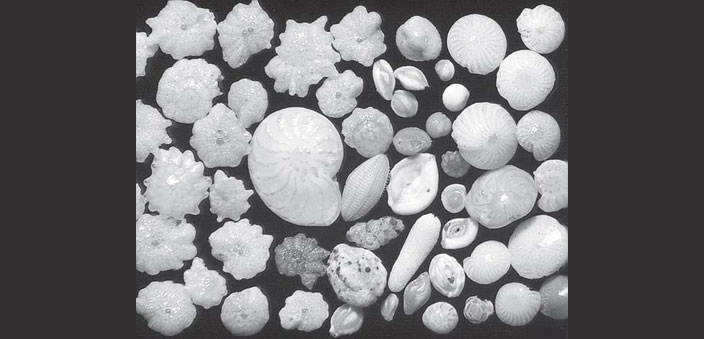The first thing that I am asked as an oceanographer is “Wow! Do you dive? Have you seen whales?” and most of the questions that follow are those on marine life. There are mixed reactions when I tell them I send instruments into the oceans from aboard a ship, to bring back cores of sediments, so that I can study past climates. I cut these cores into slices, each of which represents a different age in time, and look at them under the microscope so that I can tell how climate was when man did not exist; how it changed with advent of man and industrialization. I claim sediments reveal the truth that humans can lie about. This is where the story gets interesting.
Man’s last sink
How many of us can imagine the oceans as the last sink? For instance, how many of us know that everything that enters our drain, ends up in the ocean, and gets preserved there as proof/proxy forever. These layers and layers of marine rocks have a story to tell – the history of evolution of Indian climate and life too! The oceans are huge basins that continue to accumulate sediments over hundreds, thousands to millions of years without a break (unless and until they get folded into a mountain like the Himalayas, and are brought up above land. It is a fact that the mountainous Himalayas and the entire deserts of Rajasthan, were once under the sea).
Why look at sediments when we have the Indian Meteorological Department for climate prediction? A majority of the Indian agriculture is completely dependent on monsoons. Climatic variations also drive current patterns that affects fish catch. In several ways, the Indian economy is dependant on climate, and thus climate prediction is a major factor in management of natural resources. One needs long term climatic data in order to accurately model and predict climates. However, systematic instrumental records of climate (i.e. temperature, rainfall, wind, etc.) are available only for the past 150 to 200 years. Some studies suggest that western India is hit by drought every 77 years. With this periodicity, 200 years of available records will hold just 2-3 cycles of drought, which is highly insufficient for modeling, crosschecking and predicting the timing, quality and quantity of monsoons. One major cause of poor prediction capabilities is lack of local, long term climatic data. Thus, undisturbed marine sediments hold the clue to this problem.
Microfossils as proxies of past climate changes
Some of the best used proxies of past climate are biogenic sediments or microfossils i.e., microscopic remains of life. Foraminifera are the most widely used marine microfossils in studying past climates and environments. These foraminifera are nothing but unicellular, marine organisms which have a shell made up of calcium carbonate. They have a life span of a few months to 3-4 years. When they die, they get buried within sediments, and behave like any other sediment grain. Just pick up a handful of sand from the beach next time you visit, and come back and observe it under a hand lens or a microscope. You will see millions of beautiful foraminifera constituting the sand grains. These foraminifera are extremely sensitive to their environment and thus different species of forams inhabit different environments. While organic pollution can cause opportunistic species abundances to rise, toxic metal pollution can cause deformation of their shells or cause reduction in their numbers. Different species characterise different environmental conditions. This increases their utility as environmental indicators.
Microfossils have an advantage over other organic and chemical proxies, which change or alter with passage of time. For example, if a factory releases toxic effluents in an estuary, it will get flushed off naturally within a few days. Water samples collected will never hold any evidence for the pollution that occurred. However, microfossil groups like foraminifera, diatoms, ostracods are a proxy for environment during their lifetime. They will incorporate that pollutant within their shell as proof of the event that no longer exists! Once they die, they get preserved in a sediment layer, which is a time-slice. So even if environmental conditions change and alter the chemical environment or cause organic degradation, the hard shell stands testimony of the time gone by. This study could be glorified as ‘Sediment forensics’.
It is only the study of the earth’s oceanic archives that has led to the understanding of past ice-ages and the current looming threat of global warming. While long term climatic variability is controlled by the earth’s rotation around the sun, its revolution around itself and the inclination of its axis, short term, local and abrupt climate changes are a feedback mechanism of what man is doing to the earth! Climate did change in the past too….. but never so fast as now!


